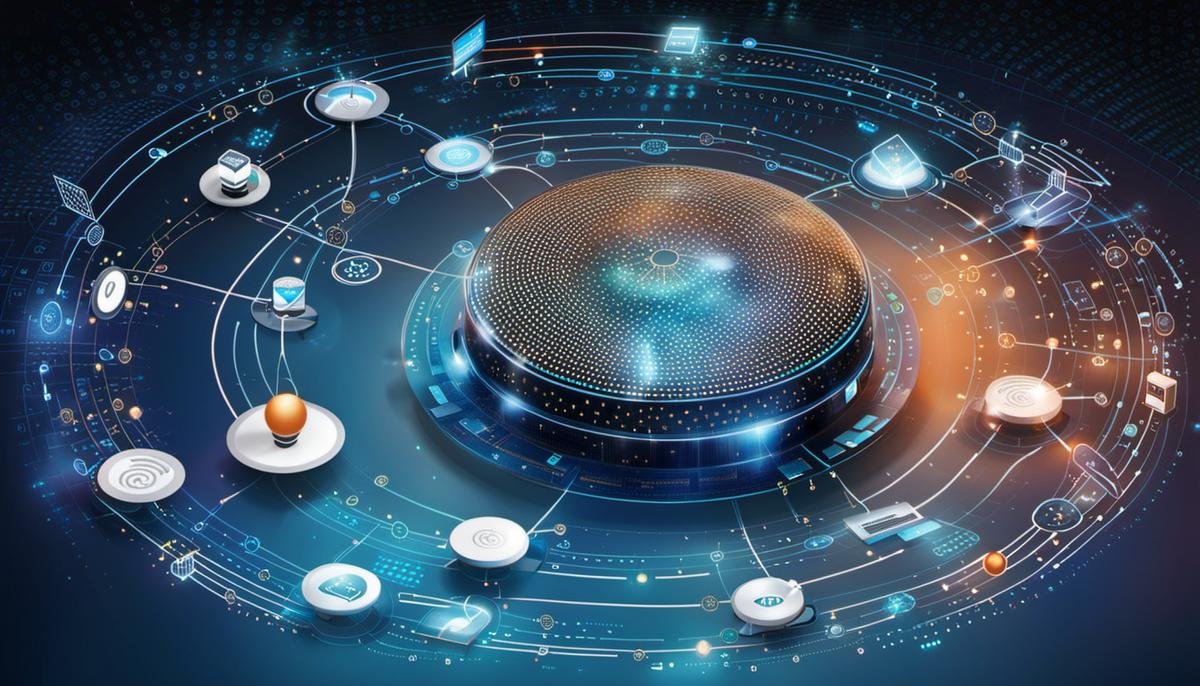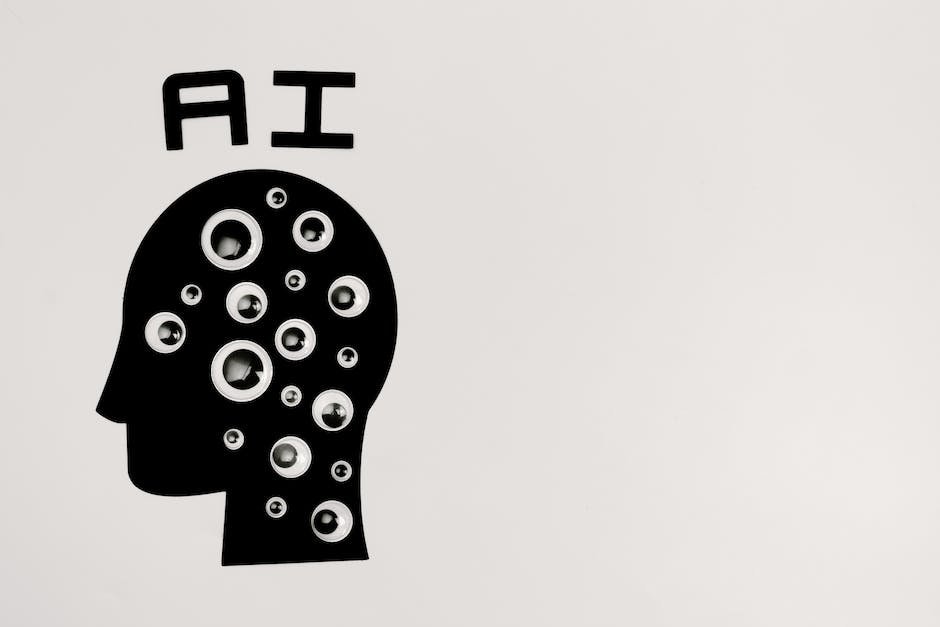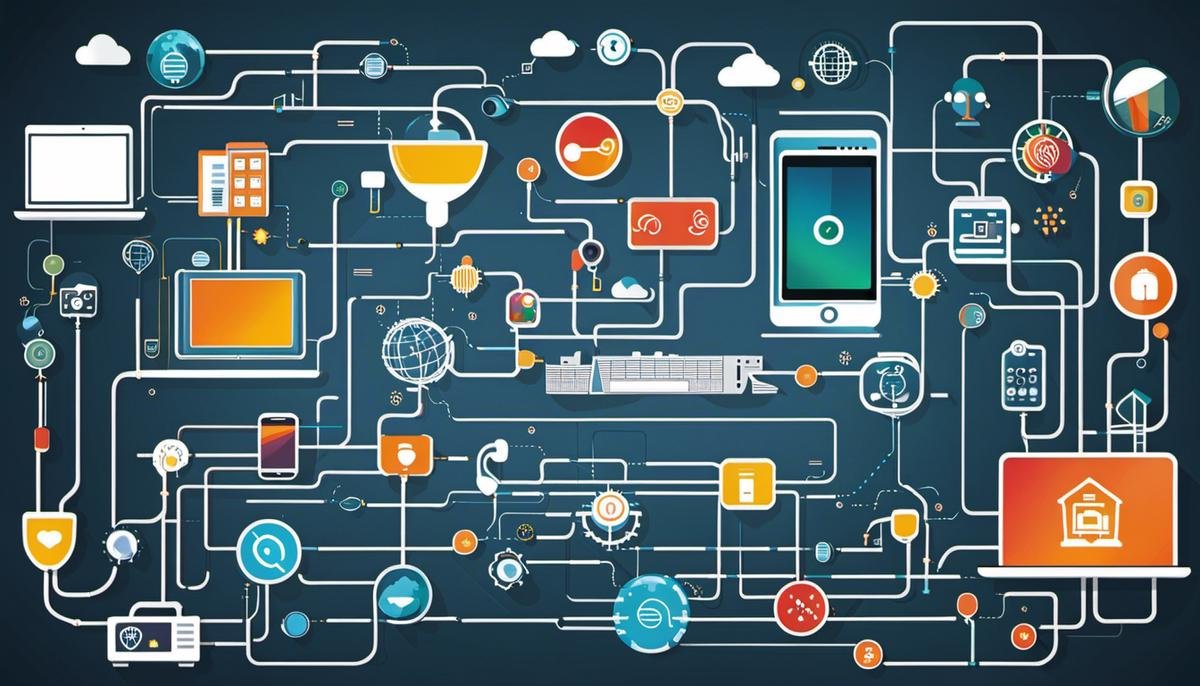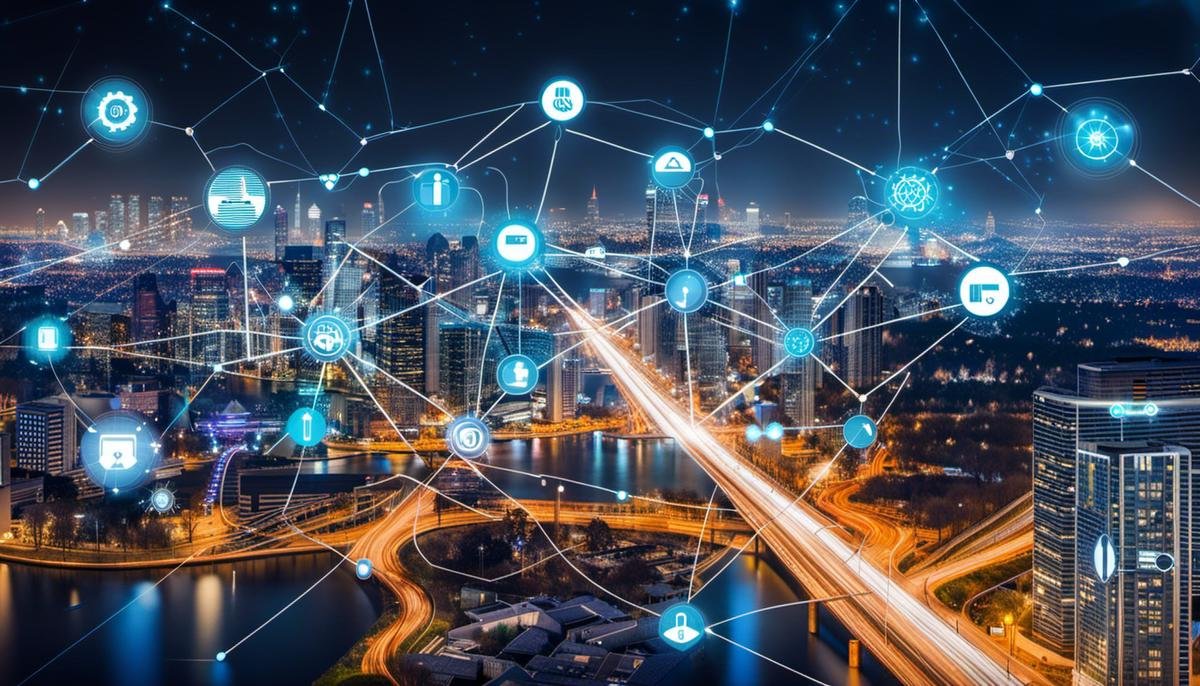The digital revolution of the 21st century has guaranteed that no part of human life remains unchanged by the lightning bolt of technology. Two key players driving this transformation are Artificial Intelligence (AI) and the Internet of Things (IoT). Tracing their origins, tracking their expansion, and forecasting their future is akin to exploring the world through the lens of discovery and innovation. As AI and IoT continue to interweave, infiltrate and influence our lives, businesses and societies, understanding these technologies becomes paramount. From smart homes and factories to predictive analytics and adaptive decision making, AI and IoT are more than just buzzwords; they are game-changers.
The Rise of AI and IoT
The Genesis of AI and IoT
The inception of Artificial Intelligence (AI) dates back to the mid-20th century when British polymath Alan Turing laid the groundwork for modern computing and theorized about machines that could imitate human intelligence. Dartmouth conference of 1956 officially coined the term Artificial Intelligence and since then researchers and scientists have worked on the theoretical and practical aspects of AI.
Internet of Things (IoT), on the other hand, found its roots much later, in the late 20th and early 21st centuries. Kevin Ashton, a British technology pioneer, first used the term IoT in 1999 during his work at Procter & Gamble. As the internet evolved, new technologies emerged that allowed physical devices to connect and communicate, leading to the development of the IoT framework.
Early Contributions to AI and IoT
During the 1950s and 1960s, early AI research laid the theoretical foundation for further research in areas such as problem-solving, symbolic methods, and stochastic methods. The first AI programs were written during this period. These programs consisted of simple, narrow AI tasks like checkers, symbolic differential equation solvers or symbolic integration programs.
In the realm of IoT, initial improvements centered around RFID technology. Over time, advancements in wireless communication, mobile computing, and hardware miniaturization accelerated the pace. One noteworthy early contribution was the development of the first ‘smart’ device, a Coke machine at Carnegie Mellon University, in the 1980s. This machine was internet-connected and could report its inventory and the temperature of newly loaded drinks.
Major Developments and Contemporary Times
The turn of the millennium witnessed substantial advancements in both AI and IoT. The integration of AI and IoT has given birth to AIoT, which is increasingly reshaping industries and consumer habits.
Several AI technologies have emerged including machine learning, neural networks, natural language processing, and robotics that are revolutionizing sectors like healthcare, finance, transport, and more. AI has also brought forth intelligent assistants like Siri, Alexa, and Google Assistant, transforming the way we interact with our devices.
In the IoT domain, the surge in connected devices has resulted in the formation of smart homes, smart cities, smart grids, and industrial Internet, which have improved efficiency, security, and decision-making.
Exploring the AI and IoT Landscape
The blossoming landscape of AI and IoT is nothing short of dynamic. Globally, we find billions of IoT devices gathering zettabytes of data daily. This massive pool of data, when interpreted through AI, produces valuable insights and empowers automated decision-making. Various enterprises across industry verticals have started to tap into these resources, thus propelling improvements in operational efficiency, reducing expenses, and establishing a competitive edge.
With advancements being made in machine reasoning, causal inference, and a range of other areas, AI is continuously pushing the limits of possibilities. Parallelly, the IoT universe is witnessing a significant expansion with the advent of 5G technology, which accelerates data transfer rates and facilitates real-time data processing and analytics.
Effective collaboration forms the backbone of the current landscape. Tech behemoths like Google, Amazon, Microsoft, and IBM are investing heavily and initiating research and development projects in both the AI and IoT markets. Emerging startups and small businesses, too, are amplifying growth by contributing to the diversity of these sectors.
To sum up, the strengthening bond between AI and IoT is evident and is projected to substantially influence the future paths of technology and society.

Understanding Artificial Intelligence
Diving Deeper into Artificial Intelligence
Artificial Intelligence, commonly known as AI, employs the imitation of human intelligence in programming machines to think in a manner similar to humans. With a focus on developing intelligent machines that respond and operate like humans, AI transcends the realm of robotics. It manifests in our daily lives through software applications, including voice assistants, recommendation mechanisms, navigation applications, and much more.
Working Mechanism of AI
The operation of AI is characterized by learning, problem-solving, reasoning, perception, and language understanding. Machine Learning, a core part of AI, involves the development of computer algorithms that improve automatically through experience. AI uses neural networks to mimic the workings of the human brain, enabling machines to learn and make decisions independently.
Types of Artificial Intelligence
- Narrow AI: Also known as weak AI, this type of AI operates under a limited context and is a simulation of human intelligence. Tasks assigned to narrow AI are typically very specific, like voice recognition.
- General AI: This type of AI can understand, learn, adapt, and implement knowledge in a way that can easily surpass human capability in most economically valuable work. It is more complex and advanced, and it possesses the ability to perform any intellectual task that a human being can.
- Super Artificial Intelligence: This is an instance of AI that surpasses all human ability and can perform tasks that are currently impossible for humans. While this type of AI does not currently exist, it’s the object of significant discussion among futurists, ethicists, and computer scientists.
Applications of AI
AI applications are many and varied, extending across diverse sectors. Advances in AI have contributed to the development of autonomous vehicles that use AI to detect objects and navigate around them. In Healthcare, AI is used in diagnostic procedures, drug formulation, personalized medicines, and patient monitoring. Retail and e-commerce sectors deploy AI technologies for predictive analysis, recommendation systems, and personalized advertisements. The use of AI in the financial field includes fraud detection, investment strategies, and customer service through chatbots.
AI and IoT
The convergence of AI and Internet of Things (IoT) is known as AIoT, which is transforming industries, enhancing productivity, and reducing operational costs. AIoT makes use of data collected from IoT devices to make decisions, perform tasks, and provide insights that may not be feasible with human intervention. For instance, AIoT is used in smart homes where AI can analyze data from different devices to optimize the home’s energy usage and security.
Challenges and Ethical Implications of AI
Despite its transformative potential, AI poses numerous challenges and ethical implications. For example, with AI systems making decisions previously made by humans, there are concerns about job displacement. Additionally, there’s a worry these systems might infringe upon privacy or be used unethically. Machine bias is another substantial concern since AI systems learn from the data they’re fed and, if this data is biased, the AI will be too.
The Dawn of AI’s Future
As we look forward into a world increasingly driven by technology, Artificial Intelligence (AI) promises to shape our digital landscape in ways previously unimaginable. It brings forth the prospect of revolutionizing transportation systems, automating labor across various sectors, enhancing diagnostic accuracy in healthcare, and predicting our needs through personal devices. However, with this unprecedented innovation, it’s imperative that we establish ethical guidelines to avoid potential misuse and ensure AI advancements are conducive to the betterment of all humanity.

Demystifying Internet of Things
Unveiling the Intricacies of the Internet of Things (IoT)
Envision the Internet of Things (IoT) as an intricate web of interconnected devices and objects, all communicating via software, sensors, and other cutting-edge technologies. This network is not limited to everyday household appliances like your refrigerator or thermostat but also extends to sophisticated industrial tools. Emanating beyond traditional industry boundaries, IoT’s profound influence can be seen permeating diverse sectors such as healthcare, transportation, and agriculture.
IoT Use Cases Across Different Industries
In the healthcare sector, IoT devices like wearable fitness trackers and heart-monitoring cuffs provide patients and medical professionals with real-time health data, which improves disease diagnosis and prevention. In agriculture, IoT technology is used in precision or smart farming where sensors are used to monitor crop and cattle health, weather conditions, and more. This helps farmers to save resources and increase yields. IoT has also made significant impacts in transportation and logistics fields, where GPS devices, sensors, and analytics work together to track and manage the movement of goods efficiently.
The Impact of IoT on Daily Life
On a day-to-day basis, many of us interact with IoT devices without realizing it. Our smartphones, smart TV, video doorbells, home assistants like Google Home and Amazon Alexa are all part of the IoT ecosystem. Our ability to control these devices remotely, sometimes using artificial intelligence (AI) for voice recognition and command execution, has transformed our lifestyle, making it more convenient and efficient.
Smart Homes and Smart Factories
In the context of IoT, the term ‘smart’ often relates to the automated and interconnected nature of devices. In a smart home, devices like lighting systems, home security cameras, thermostats, and even major appliances can communicate with each other, make autonomous decisions and be remotely controlled via smartphones or tablets. This technology provides convenience, energy efficiency, and enhanced security for homeowners.
Smart factories, also known as Industry 4.0, use IoT technologies for automation, real-time monitoring, and data analysis. With connected devices, predictive analytics can warn of possible equipment failures before they occur, preventing costly downtime. This data-driven approach allows for more efficient and flexible production processes.
IoT Security
As with any technology dealing with data, security is a significant concern with IoT. The interconnected nature of IoT devices means that if one device is compromised, it could affect the entire network. To tackle this, robust security measures including encryptions, secure device updates, and user privacy protections are vital. As technology evolves, so do threats. Therefore, constant vigilance and updating of security measures are required to keep IoT networks safe.
The Expanding Horizons of IoT
With the fusion of artificial intelligence (AI) and the Internet of Things (IoT), the future holds vast potential in numerous sectors. As AI evolves, IoT devices are becoming increasingly intelligent and autonomous, capable of intricate decision-making that mimics human intelligence. For instance, in healthcare, wearable technology combined with AI can interpret data to predict serious health issues before they even manifest. Similarly, autonomous vehicles represent another area where the convergence of IoT and AI holds remarkable potential. Progress in tech will only further broaden the applications of IoT. An exemplary future advancement could be the rise of smart cities, which leverage IoT for managing everything from traffic and energy consumption to public services.

The Intersection of AI and IoT
Deciphering The Power-Combination: AI and IoT
Artificial Intelligence (AI) and the Internet of Things (IoT) are transformative technologies that are reshaping modern industries. AI imitates intelligent human behavior and equips systems with the power to automatically learn and perfect themselves with experience, eliminating the need for detailed programming. Complementing this, IoT represents a network of interconnected devices that communicate and exchange data, augmenting the capability to control devices remotely over existing networks. Put together, the intersection of AI and IoT promises to revolutionize our approach to technology and its applications.
AI’s Role in Enhancing IoT: The Power of Machine Learning and Predictive Analysis
AI plays an instrumental role in supercharging the capabilities of IoT. AI’s subsets, Machine Learning (ML) and predictive analysis, particularly stand out. Machine learning is focused on the development of computer programs that access data and use it to learn for themselves. The integration of ML with IoT devices have made it possible for these devices to learn from the data they collect, pick out patterns, and make decisions with minimal human intervention. Subsequently, this has led to the development of smarter, self-learning IoT devices and systems that are progressively improving in performing tasks with every new bit of data they encounter.
Predictive analysis, another key capability of AI, uses current and historical facts to make predictions about future events. In the realm of IoT, this AI capability has been game-changing. AI-powered IoT devices can now make predictions based on the data they collect and take necessary actions proactively. This makes systems smarter and more efficient as preventive measures can be taken before any system failure.
AI-Powered IoT: Smarter and Self-Learning Systems
The synergy of AI and IoT has led to the emergence of AIoT – a blend of AI and IoT. AIoT represents the future of computing, where smart devices will not only collect and interpret data, but also make decisions based on this interpretation.
A compelling example of AIoT is found in smart homes or offices where connected devices can automatically adjust heating and lighting based on occupancy and time of day. These systems leverage machine learning to learn occupants’ preferences over time and provide an optimum environment.
Real-World Examples of AI-Powered IoT Systems
There are numerous examples of AI-powered IoT systems making lives easier and businesses more efficient. One prime example is the use of AIoT in manufacturing plants. Here, IoT sensors coupled with AI capabilities are used to predict maintenance needs and prevent equipment failure, a practice known as predictive maintenance.
Another classic example can be seen in the healthcare sector. Smart wearables and other IoT devices continuously collect individual health data – heart rate, sleep patterns, blood sugar levels to name a few. AI algorithms then analyze this data to pick out anomalies and predict potential health risks, facilitating early intervention measures and personalized healthcare.
In conclusion, the convergence of AI and IoT represents not just the arrival of a new era of technological sophistication but a pivotal societal transformation. The fusion of these cutting-edge technologies underpins the creation and successful implementation of innovative solutions—these elevate operational efficiency, empower automation, and facilitate knowledgeable decision-making in both personal and professional realms. In essence, AIoT has ushered in the age of smarter and self-educating systems forever changing how we engage with technology.

Photo by domenicoloia on Unsplash
Future Trends and Predictions
The Future Landscape of AI and IoT
Artificial Intelligence (AI) and the Internet of Things (IoT) have emerged as revolutionary technological trends over the past decade, reshaping various facets of our world. Predications by experts suggest that the influence of AI and IoT will only amplify, impacting diverse areas ranging from our professional conduct, our domestic settings, to the way we relate to our environment.
The integration of AI and IoT continues to evolve in distinctive and innovative directions. One of the key predictions revolves around the term ‘ambient intelligence’ – an environment that can adapt and respond to human presence, brought to life by merging AI, IoT, Big Data, and other frontier technologies. Visualize a smart home that auto-adjusts the temperature, light settings, and entertainment based on your mood and behavior—what used to be a feature of science fiction is now becoming a forthcoming reality.
From a business perspective, the confluence of AI and IoT brings the promise of amplified operational efficiencies, substantial cost reductions, and revolutionary revenue generation opportunities. The utilization of AI for data examination offers exceptional predictive insights, assisting businesses in making astute decisions, while IoT applications streamline supply chains and heighten manufacturing process efficiency.
Impact on Economy and job Market
The integration of AI and IoT is anticipated to greatly impact the global economy and job market as well. According to a report by McKinsey Global Institute, AI could contribute up to $13 trillion to the global economy by 2030. Similarly, Accenture has predicted that industrial IoT could add $14.2 trillion to the global economy by 2030.
While these forecasts are exciting, they also bring certain challenges. The increasing automation may lead to job displacement, especially in routine, manual roles. However, AI and IoT technologies also promise new job opportunities in areas which require decision-making, problem-solving, and creative tasks–roles that are less susceptible to automation.
To prepare for these changes, upskilling and reskilling the workforce is seen as critical. It’s recommended for individuals to focus on developing skills which will be in high demand, such as coding and data analytics, among others. Governments and educational institutions will also play a key role in facilitating this.
Legislative Perspectives and Privacy Concerns
As AI and IoT technologies continue to advance, they raise far-reaching social, ethical and legal issues. Globally, legislative bodies are grappling with questions related to privacy, data security, and ethical use of these technologies. Proper regulation is a challenging balancing act—ensuring the potential benefits of AI and IoT are realized, while minimizing their potential risks and harms.
Privacy is one of the biggest concerns. IoT devices can collect vast amounts of data, often sensitive, while AI algorithms can analyze this data in ways that could intrude on personal privacy. Therefore, establishing ethical guidelines and legal safeguards around data collection, use, and security is essential.
Several countries have started implementing laws to deal with these issues. For example, the European Union’s General Data Protection Regulation (GDPR) is a comprehensive data protection law, while in the US, California’s Consumer Privacy Act (CCPA) offers some protection to the state’s residents.
However, legislation around AI and IoT continues to be a complex, evolving field. It’s hoped that legal frameworks will mature alongside these technologies, to ensure that they’re harnessed safely and responsibly.

With a future poised on the cusp of AI and IoT, the possibilities seem endless. Whether it’s intelligent IoT devices that adapt to our needs or AI improvisations shattering technological limits, our world is a constant dance of transformation. However, while we marvel at this digital ballet, it is indispensable to ponder upon the ethical implications, security concerns, and legislative challenges it raises. As we continue to harness technology, the lines between science fiction and reality blur, promising a tomorrow that offers more than we can comprehend today.


